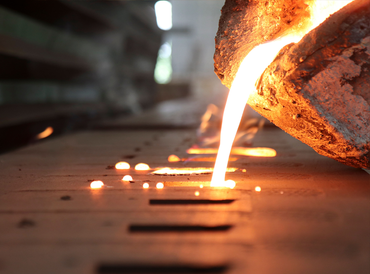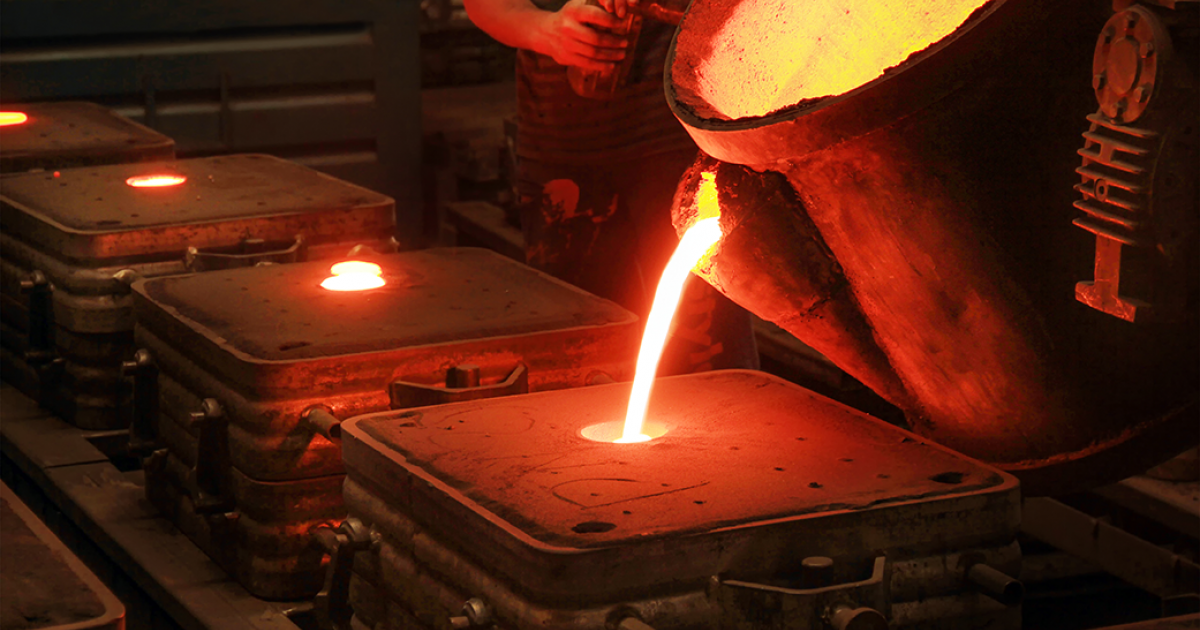Comprehending Metal Casting Processes: Advancements and Trends in the Foundry Industry
The foundry market is experiencing considerable improvements driven by technical developments. Innovations such as 3D printing and expert system are reshaping metal casting procedures, boosting effectiveness and precision. Sustainable methods are getting traction, stressing the relevance of ecological obligation. In enhancement, the introduction of innovative products and automation is improving overall casting high quality. These developments suggest a critical shift in the market, increasing inquiries regarding future directions and effects for makers.
Improvements in 3D Printing for Metal Casting
Current advancements in 3D printing modern technology have actually significantly changed the landscape of metal casting. The combination of additive manufacturing strategies has actually allowed the fast production of complicated patterns and molds that were impossible or previously challenging to achieve with typical approaches. By utilizing products such as sand and metal powders, manufacturers can develop detailed geometries that improve style versatility and minimize material waste. This technology not just expedites the prototyping process but additionally enables for the modification of parts tailored to certain applications.
3D printing helps with much shorter lead times, which is vital in markets needing quick turnaround for components. The modern technology also supports the production of lightweight structures, thereby improving power performance in final product. Therefore, the foundry sector is seeing a change in the direction of more sustainable techniques, driven by the effectiveness and precision used by these contemporary 3D printing methods in metal casting processes.
The Role of Expert System in Precision Manufacturing
As markets progressively adopt sophisticated manufacturing modern technologies, expert system (AI) is playing a critical duty in improving precision production procedures. AI formulas examine large datasets to optimize and identify patterns manufacturing criteria, resulting in enhanced precision and efficiency. In metal casting, AI help in anticipating maintenance, reducing downtime by projecting devices failures prior to they happen.
AI-driven simulations enable producers to design the casting process, refining layouts and minimizing defects. Maker discovering techniques boost quality control by finding anomalies in real-time, consequently ensuring that just products satisfying strict specifications continue with the assembly line.

Sustainable Practices in the Foundry Market
Sustainability has actually become a critical emphasis in the foundry market, triggering suppliers to take on methods that minimize ecological effect while preserving performance - Metal Foundry. One famous method consists of the recycling of products, specifically steels, which considerably lowers waste and power consumption. Foundries are significantly executing closed-loop systems, permitting the reuse of sand and other casting materials, thus minimizing the requirement for virgin sources
In enhancement, energy-efficient innovations, such as electrical heaters, are gaining traction, as they lower greenhouse gas exhausts compared to typical techniques. Several foundries are discovering the usage of biodegradable binders and green finishes to decrease harmful results. Employee training on sustainable methods has additionally become crucial, promoting a society of ecological obligation within companies. Generally, these sustainable methods not only add to environmental preservation however also improve the long-term practicality of the foundry sector in an increasingly eco-conscious market.
Developments in Materials for Enhanced Casting High Quality
With the continuous advancement of the foundry market, technologies in materials have come to be vital for improving casting top quality. Advanced alloys and composite products are increasingly being utilized to boost mechanical residential properties and minimize problems in spreadings. These materials typically supply exceptional strength-to-weight proportions and boosted resistance to rust and wear, resolving the demands of modern-day applications.
Additionally, the consolidation of nanomaterials is gaining traction, enabling for finer microstructures that result in enhanced surface area finishes and dimensional accuracy. Aluminum Foundry. 3D printing modern technologies additionally play a role in generating intricate geometries with very little waste, allowing making use of specialized products that were formerly challenging to cast
In addition, the development of eco-friendly binders and additives adds to sustainable techniques while keeping premium outcomes. Jointly, these innovations not just enhance the efficiency of actors products but likewise align with the industry's change in the direction of sustainability and performance.
Automation and Robotics in Metal Casting Processes
Automation and robotics are reinventing steel casting processes by enhancing operations and boosting precision. In modern-day factories, robot systems are used for jobs such as mold handling, pouring, and completing, considerably reducing human intervention. This not just lessens the threat of crashes yet likewise guarantees constant high quality in production.
Automation innovations, such as computer system numerical control (CNC) machines, facilitate complex layouts and intricate geometries that were previously testing to attain. Real-time data analytics make it possible for manufacturers to enhance and monitor processes efficiency continuously.
Keep an eye on The assimilation of automation causes boosted efficiency and efficiency, enabling factories to satisfy growing market needs while minimizing preparations. As the industry accepts these improvements, the workforce is additionally evolving, requiring new abilities to operate and maintain sophisticated machinery. Overall, the adoption of automation and robotics is a critical pattern forming the future of steel casting processes.
Regularly Asked Concerns
What Is the History of Metal Casting Strategies?
Metal casting methods go back to ancient human beings, with evidence of bronze casting in Mesopotamia around 3000 BCE. Over centuries, methods developed considerably, including advancements in materials and technology, forming modern-day industrial methods.
Just How Does Metal Casting Influence the Environment?
Metal casting significantly affects the atmosphere via power intake, exhausts, and waste generation. Developments in lasting techniques and technologies aim to minimize these effects, promoting more environmentally pleasant methods within the industry.
What Precaution Are Important in Foundries?

What Are Typical Problems in Metal Casting Products?
Usual issues in metal casting products include porosity, shrinkage, misruns, cold shuts, and surface area blemishes. These problems occur from factors such as improper temperature level control, insufficient mold layout, and contamination during the casting procedure.
Just How Do Foundries Make Sure Top Quality Control in Casting Processes?
Shops apply rigorous quality assurance actions through regular examinations, standard testing, procedure monitoring, and adherence to market standards. These methods aid website recognize problems early, making certain the stability and integrity of the last casting products.
Technologies such as 3D printing and man-made knowledge are reshaping steel casting processes, improving efficiency and precision. Recent developments in 3D printing modern technology have considerably changed the landscape of steel casting. Automation and robotics are revolutionizing metal casting procedures by simplifying operations and improving precision. Metal casting methods day back to old human beings, with evidence of bronze casting in Mesopotamia around 3000 BCE. Common problems in steel casting items include porosity, shrinking, misruns, chilly shuts, and surface area flaws.